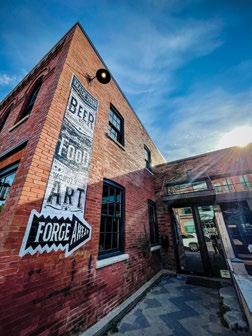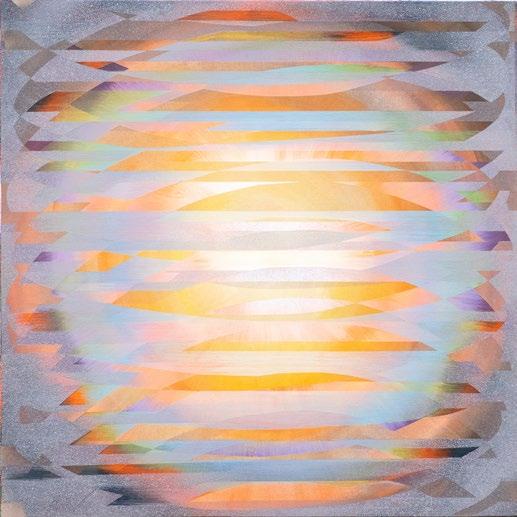
5 minute read
ARTIST PROFILE
The Moody Bay
You can call them waterscapes, feelingscapes, thoughtscapes or abstracts, but Jeremy Down’s series of paintings of Georgian Bay will challenge your perceptions of the Sixth Great Lake
Truth Truce.
words :: Ned Morgan // photos :: Kristin Schnelten
After talking to Jeremy Down I think about the landscape—in particular the waterscape—differently. The painter has based a recent series of watercolours on local freshwater colossus Georgian Bay. “Water’s like magic,” he says. “You can’t really paint it—it just keeps moving around.” For me this statement is a key to understanding Down’s series.
His are not the sort of landscape paintings that recreate or strictly represent the usual elements. Instead they use pattern, form and unusual colour palettes to suggest mood, movement and natural cycles. Down isn’t showing us pictures of water—he is painting ideas about its form and meaning. He explains: “For me, each mood has visual content. I don’t need reference photos. [The paintings] come from an experiential point, not a representational one. So even though I say they’re inspired by the bay, I’m not painting a picture of the water.”
ML sat down with Jeremy in his bright, spartan studio in a converted garage beside his home in Meaford, just after a November blizzard.
Jeremy Down: Georgian Bay is a force. And I think that affects the way people are around here. They have a respect for weather and nature. The colours [in the bay series] are taken directly from sunsets or sunrises. There’s enough visual stimulus from the colours and moods of the bay to never get bored. And I’m coming from living on Slocan Lake [B.C.] which is super-stunning but in the winter it’s always socked in. It doesn’t have these layers of colour. For an artist that’s pretty inspiring.
ML: Can you tell me about the beginnings of the bay series?
JD: Bay Flow Number One was the first. And it’s not really a sunset; I was paddling over the shale layer out there. The clay is that bluish purplish colour. This was inspired by being way out there, on a flat day. And then I thought, There’s something that can happen with a series… I think there’s enough variety. When you’re developing a series, you want it to have longevity.
Another early one was Truth Truce, which doesn’t look like water. But it sure feels like it to me. There are a few different points of content. There’s a kind of upward flow and spiraling here. After years of yoga practice and meditation, [I see the] spine as a conduit or a tree. A tree sucks water up into all the branches. They’re chakras, all the little points where your nerve centres bunch together. It’s connected to breathwork. And a lot of those subtle sensations are clarified after paddling on the bay because that’s what being in nature does.
ML: Wave forms permeate this series. When you’re surfing are you taking notes, so to speak?
JD: I see waves both in terms of the water but also waves in life, waves in patterns, in habits—and how waves hit each other and change, or bounce off the jetty. But because it isn’t literal, I’m thinking about how we live as humans, and our patterns and what they do into the future, because a wave has a time element. So you do something here, and it has a ripple effect into the future. And then when two waves meet, they clash.
ML: Could you talk about the inspiration behind Litany? You painted it after the passing of a friend and neighbour, is that right?
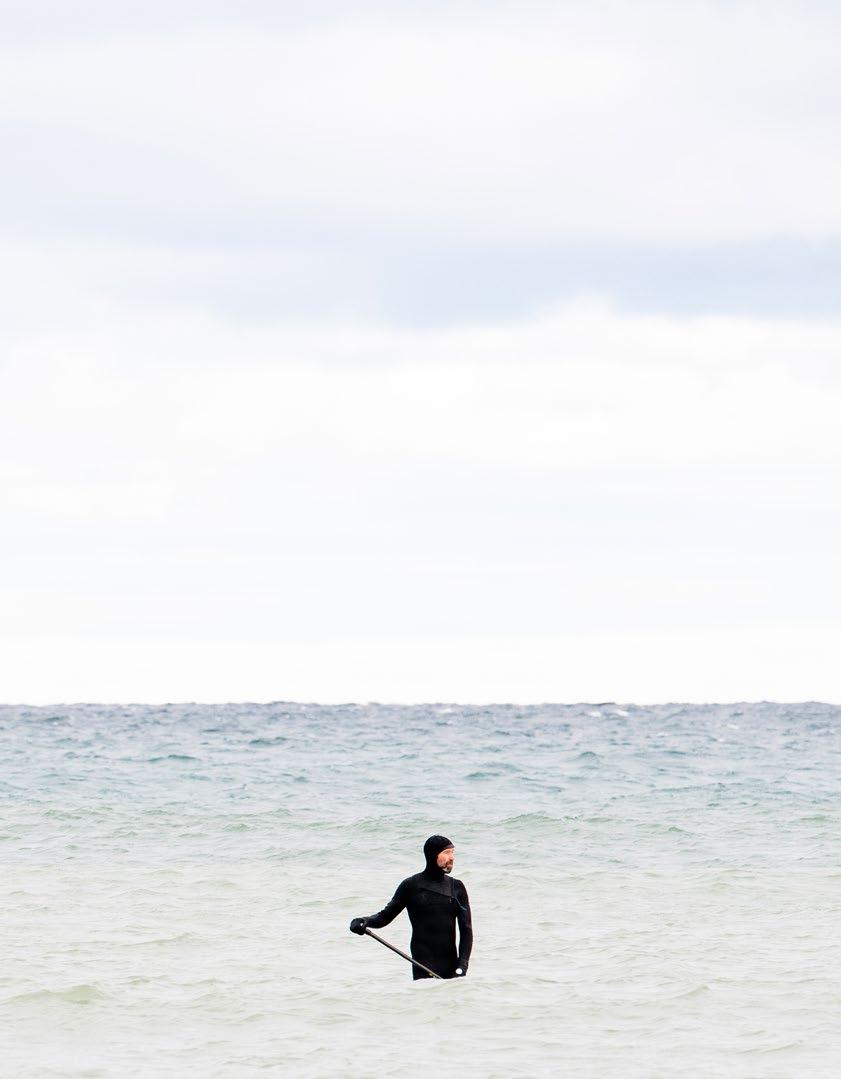
JD: As I was painting this I was processing [my friend’s] passing. I was on the water a lot—beautiful sunsets, warm colours and cold colours. But Litany is so simple. There’s no clash and not even many layers. The image is a traditional Japanese form that means waves or the ocean—this circle with another circle, and another circle. And they build on each other. I’ve played with it in a few paintings.
But Litany surprised me because I didn’t paint a lot of layers. I’m still processing this one, but when someone passes it’s kind of simple. It’s a weird thing to say, but they’re just gone.
And this one, Cathedrille, I was looking at like this [turns painting vertically]. And it seemed like an ice cathedral. These forms are like buttresses in cathedrals and we were at the funeral at the Anglican church in Meaford and I was influenced by that. And then there were some beautiful cold days last week. I had three days of waves and ice-blue water. And one day it was like head-high and barreling. I thought This is like a cathedral. It’s just so beautiful.
ML: Several of the pieces in the bay series look to me like hybrids of landscapes and abstracts, which you don’t see very often.
JD: That’s something I’m always playing with. You can see them as landscapes or feelingscapes or thoughtscapes because all those cues are in there. Landscape painting is pretty static and that’s not what this is. The bay never sleeps. Nature has always got something to give you. You just have to go find it. And so that means there’s always going to be another painting. And it’s intertwined with life. That was a big experience going to that funeral in the middle of the snowstorm and then [surfing] really good waves with nobody on them—it was a little scary because I was out there by myself. You talked about seeing the landscape, but it’s also abstract. Where those two meet—that’s my life.
See Jeremy’s art at the Craig Gallery in Meaford. www.jeremydown.com, www.labstudioclinic.com, www.mantrayogastudio.ca, @jeremy_down
Cathedrille.
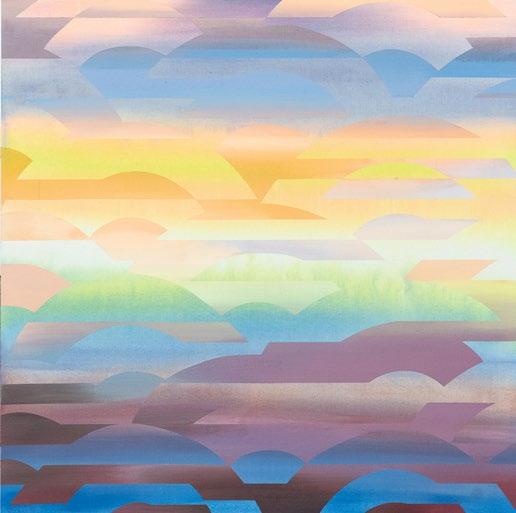
Let me help you fi nd your dream home.
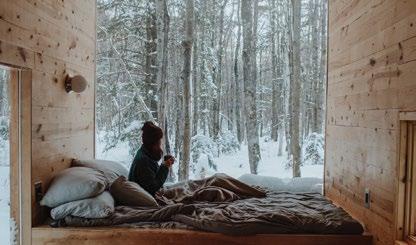
“Working with Ellen is a breath of fresh air” – Alex J.
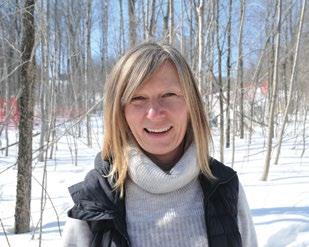
Your home is my business
Ellen Kalis Sales Representative 416-527-2896 ellenkalis@gmail.com
ellenkalisrealty


Food d,Beer r, Community
